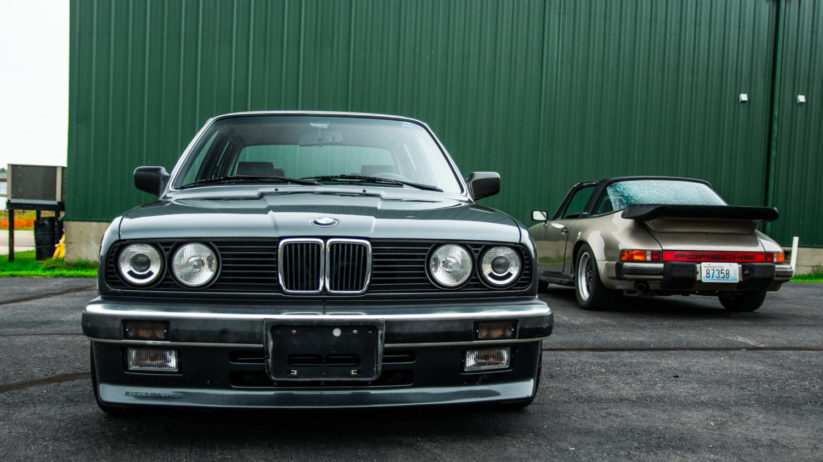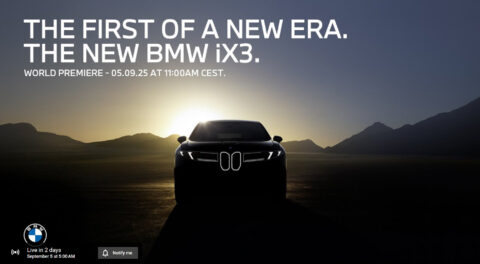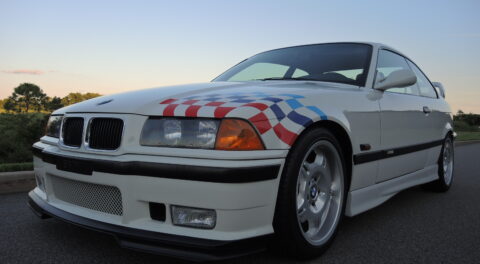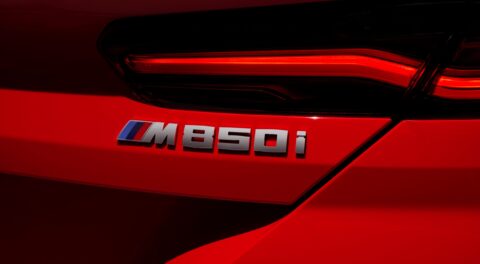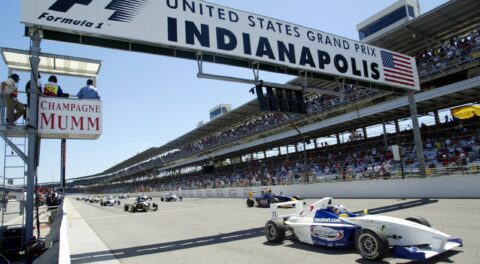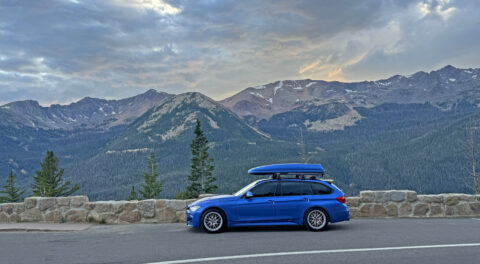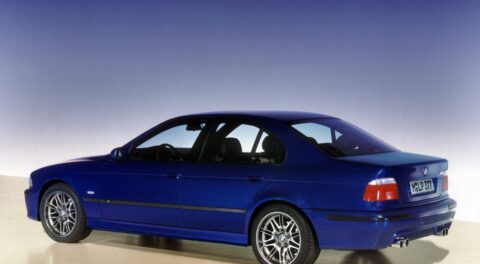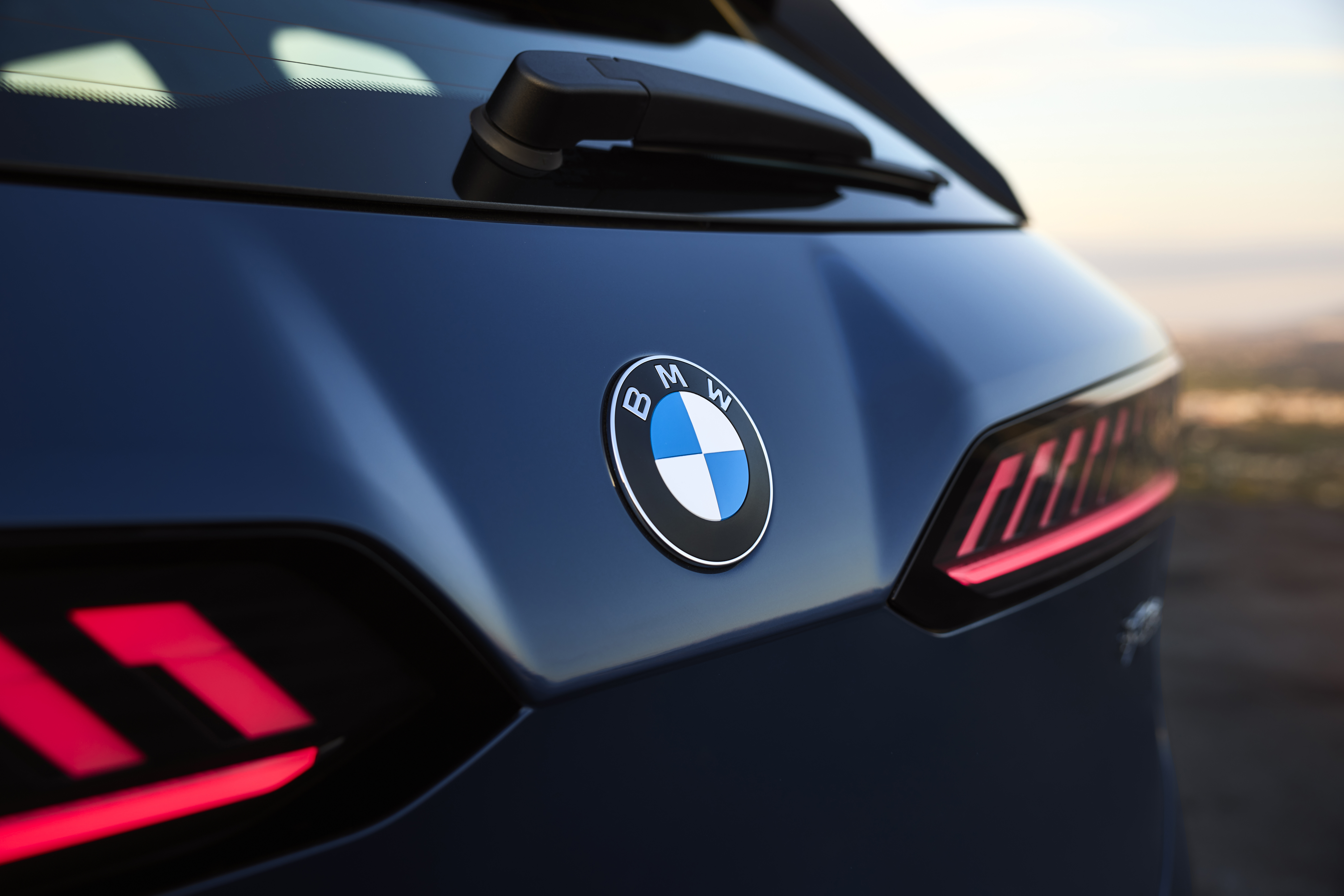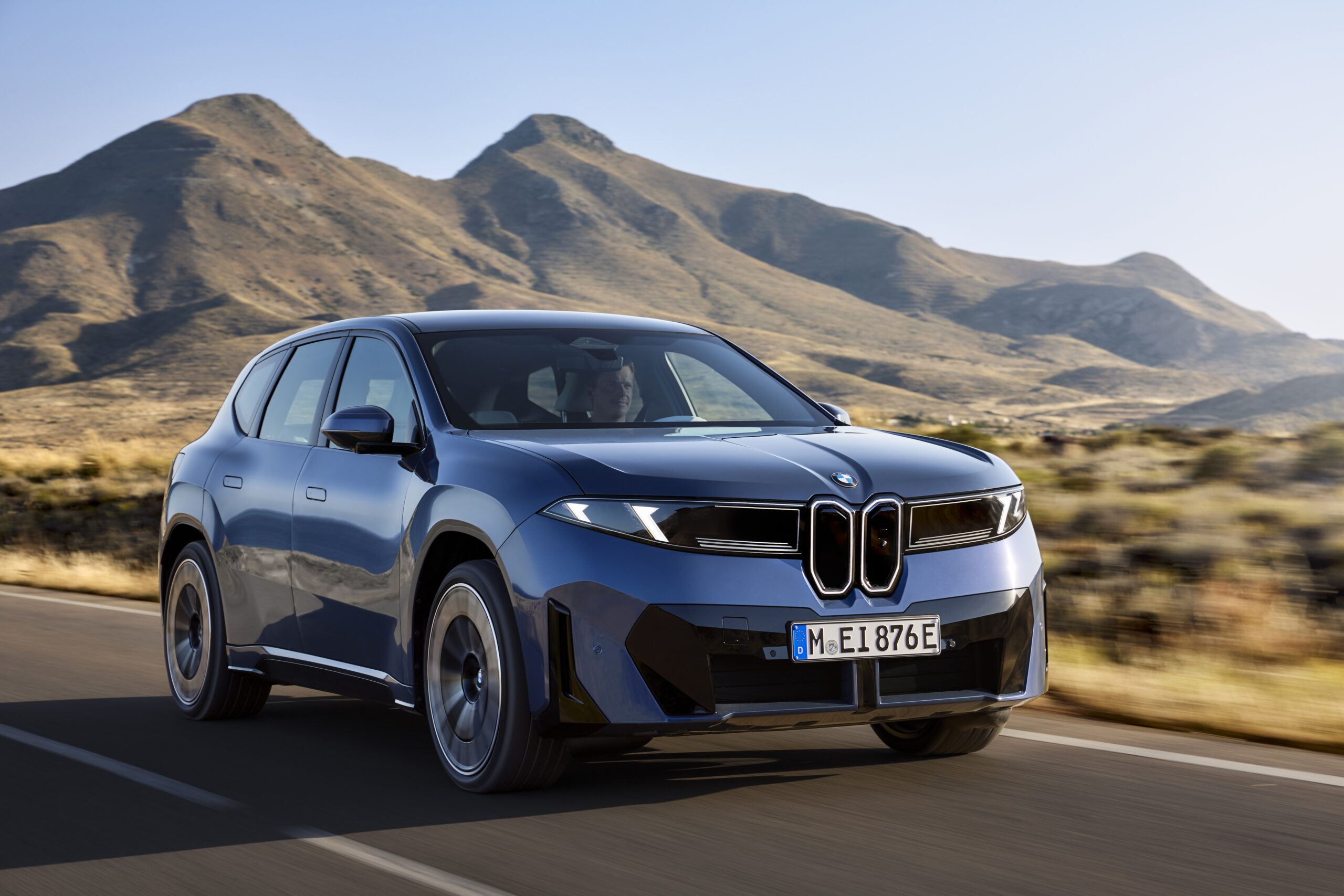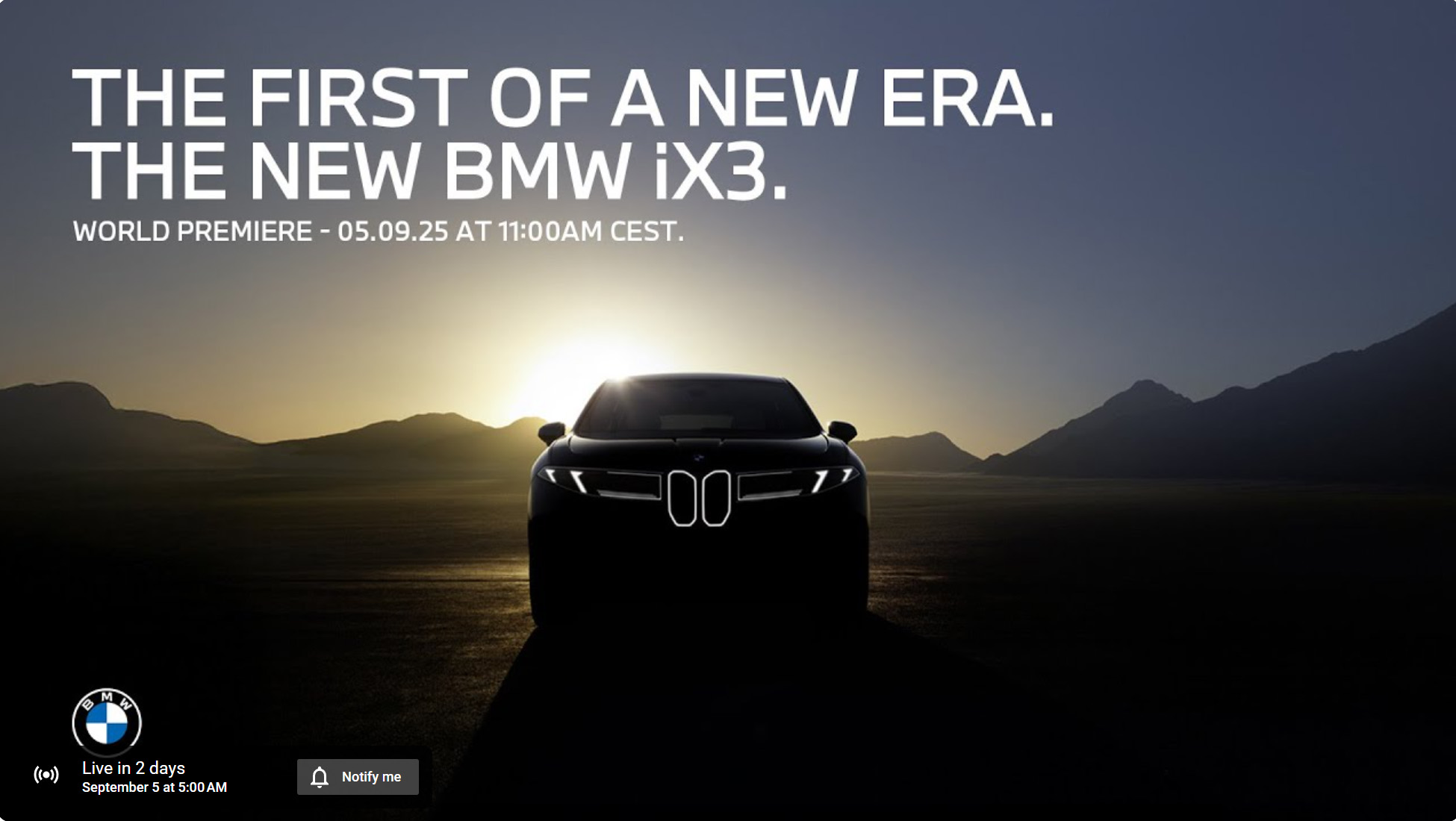The second-generation BMW 3 Series—the E30—has long been called “God’s Chariot,”earning this nickname because it is wonderfully communicative, responsive, and well balanced. But lately, the term God’s Chariot as been thrown around to describe another ’80s German stalwart, the 1978-to-1983 Porsche 911 SC.
Now, if God were to have the need of a chariot, and if that chariot were to be a 30-year-old German automobile, we would all be in trouble—but nonetheless, which one would be better suited for the job, the E30 or the 911 SC?
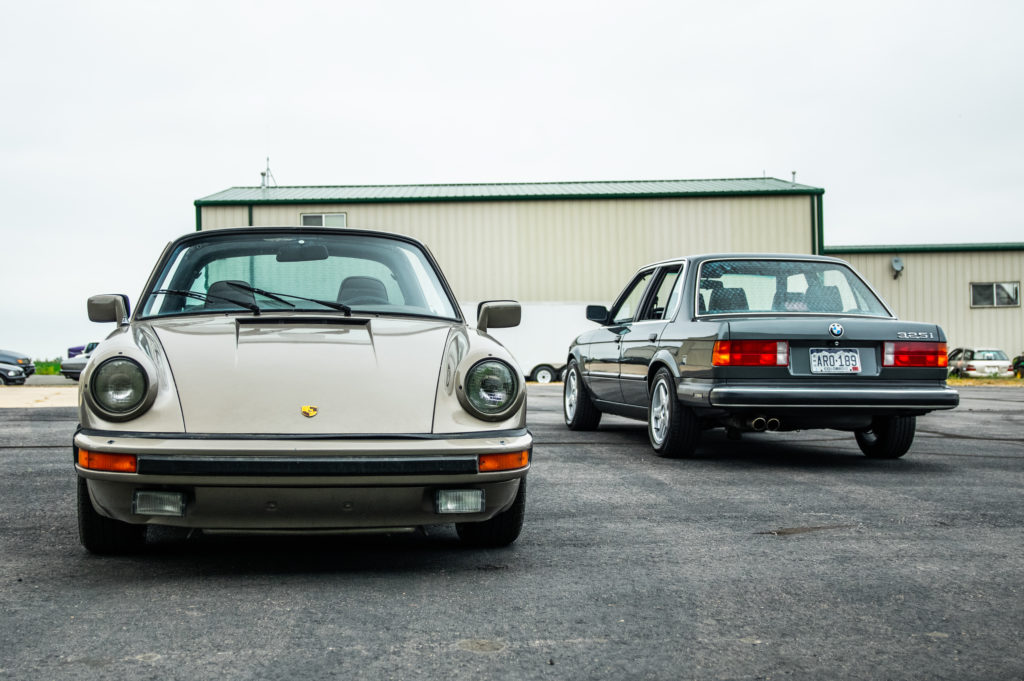
The 1987 BMW 325i and 1982 Porsche 911 SC Targa: rival chariots. [Photo: Peter Thompson]
Yet in many ways the 911 SC is remarkably inferior to the E30.
Even though the SC was the eighth evolution of the Porsche 911, it was antiquated at its release. The engine was still cooled by air and mounted behind the wrong axle (although in 1979 Porsche was about to remedy this with the 911’s replacement, the 928). The rear suspension was based on a twisted bar of metal that could kill you if you didn’t mind your feet while cornering.
Inside, it was even worse; the steering wheel was close enough to the dashboard that you could stub your fingers on it. The shifter was closer to your ankle than to your hip, and when you did reach it, the 915 gearbox was utterly terrible. Then, when you needed to defrost the windshield from all of the heavy breathing required to drive the car, those critical climate controls were mounted on the floor—the floor! No E30 owner has ever had put up with such indignities, and when viewed from a comparative perspective, the SC’s deficiencies only highlight how good the E30 is.

How would you preferGod’s Chariot, engine in the front or engine in the rear?
[Photo: Peter Thompson]
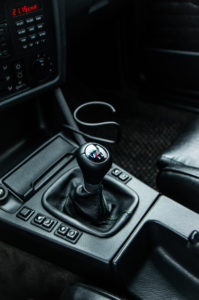
A 13-Button OBC, illuminated shift knob, and a cup holder make up the center console.
While neither the E30 nor the SC is particularly fast by modern standards, both cars offer a pure, undiluted, organic driving experience—which enthusiasts have come to relish against the backdrop of the contemporary car. And as time and technology have marched inevitably forward, both classics continue to age like fine wine.
Market prices have also risen proportionally, although the air-cooled 911 market has gone stratospheric, while the E30 has enjoyed slow and steady appreciation. And that brings us to the other issue with this comparison: price. The 911 SC had always been considered the “affordable” 911, but its values have ridden the wave of the larger air-cooled market, making an entry-level example two to three times the price of a non-M E30.
But what if we were to compare the cheapest 911 SC, a beat up Targa, to one of the best E30s, the 325iS?
An E30 M3 would be the more proportional E30 in price and performance, but I’d rather consider cars that could be daily driven without guilt—and since I just happened to have an example of each at my disposal, some journalism was in order!
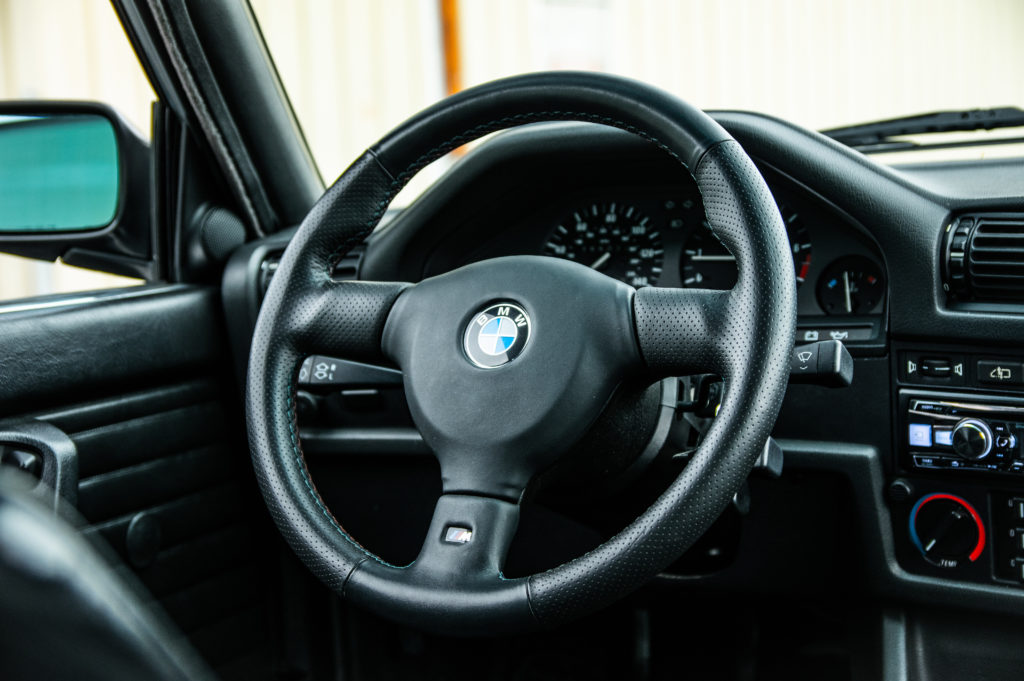
The small-diameter M Tech II steering wheel is the best E30 steering wheel. There, I’ve said it. [Photo: Peter Thompson]
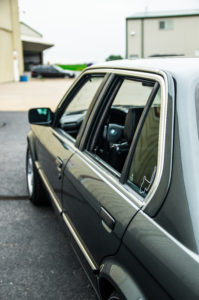
Sedan lovers rejoice, BMW never made a 325iS sedan, but the original owner made this sedan into one.
Let’s start with the E30. This one actually isn’t a 325iS; rather, it’s a 1987 Delphin Grey-over-black-leather 325i sedan. Bear with me, as this 1987 325i sedan is the kind of E30 that could take years to find—in fact, it did, when my friend found it after extensive searching several years ago. It was owned for the majority of its life by the original fanatical owner, who outfitted it with virtually everything that the 325iS came with: sport seats, a thirteen-button on-board computer, limited-slip differential, premium sound system, rear headrests and so on. Then he upgraded it significantly; the short list consists of a rebuilt engine with high-compression Euro pistons, a Euro cam, a Miller Pro Sport induction kit, Bavarian Autosport long-tube headers, a Magnaflow muffler, and an H&R/Bilstein suspension.
Eye candy consists of an M Tech II steering wheel, Racing Dynamics front air dam, and Azev wheels. The Delphin paint is so brilliant that it shines like a freshly basted turkey on Thanksgiving Day, and the interior leather has the fine luster that only results from years of obsessive care. With over 150,000 miles on the working odometer, it isn’t quite a collector-grade E30, but it is a very nice driver quality example. It sold last year in the mid-teens, a strong number, but I suspect that it would bring more in the current market.
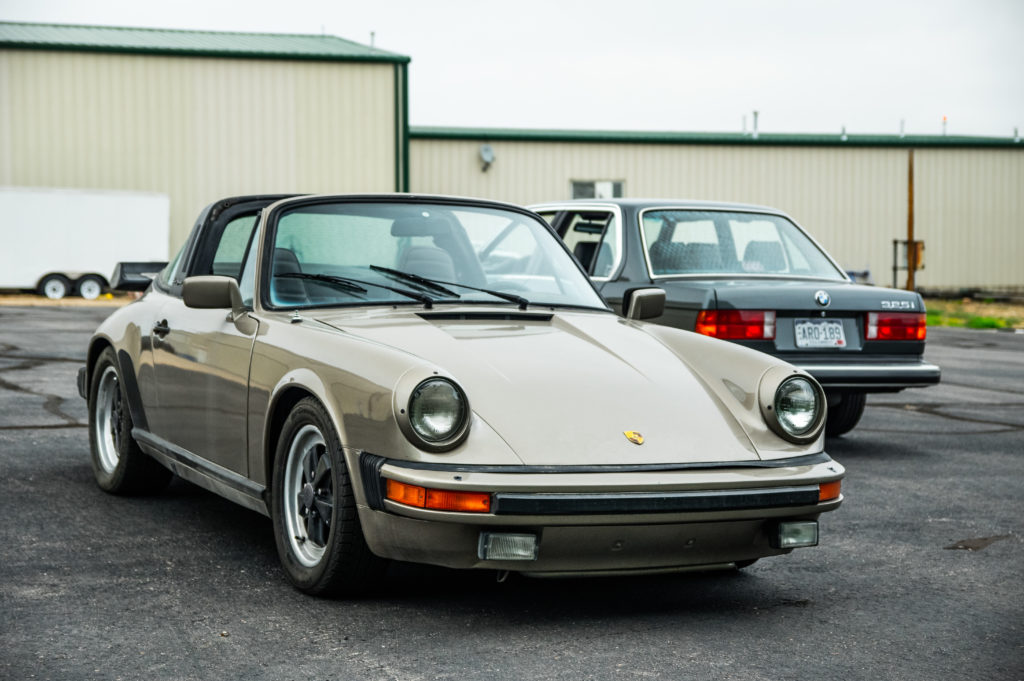
The 911SC Targa is a timeless iconic form. [Photo: Peter Thompson]
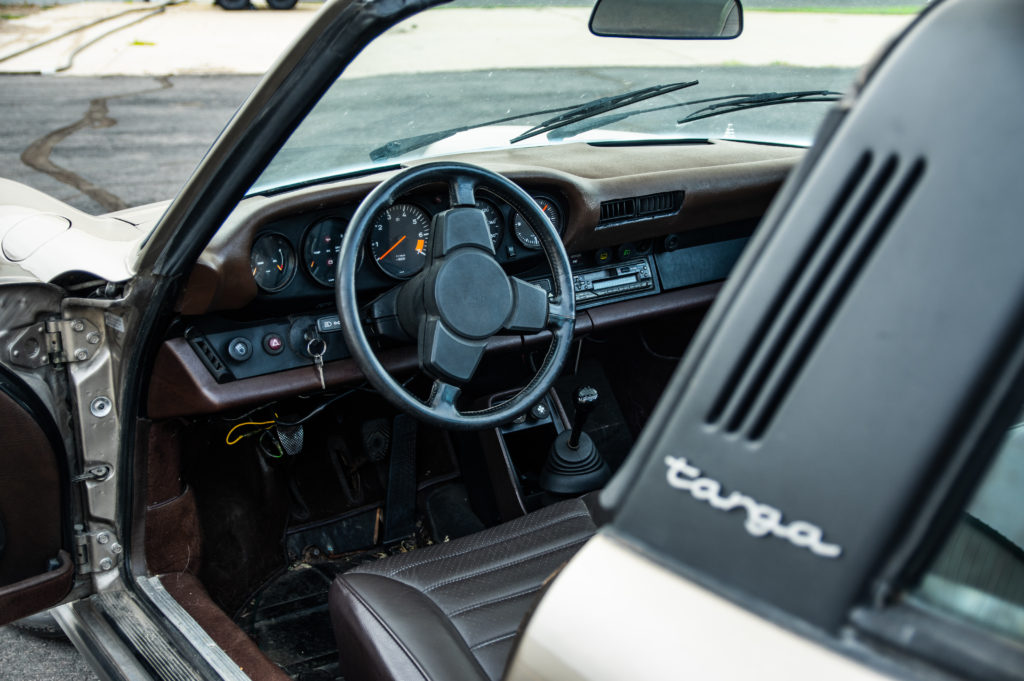
Late-model 911 SCs had a distinctive three-spoke steering wheel. [Photo: Peter Thompson]
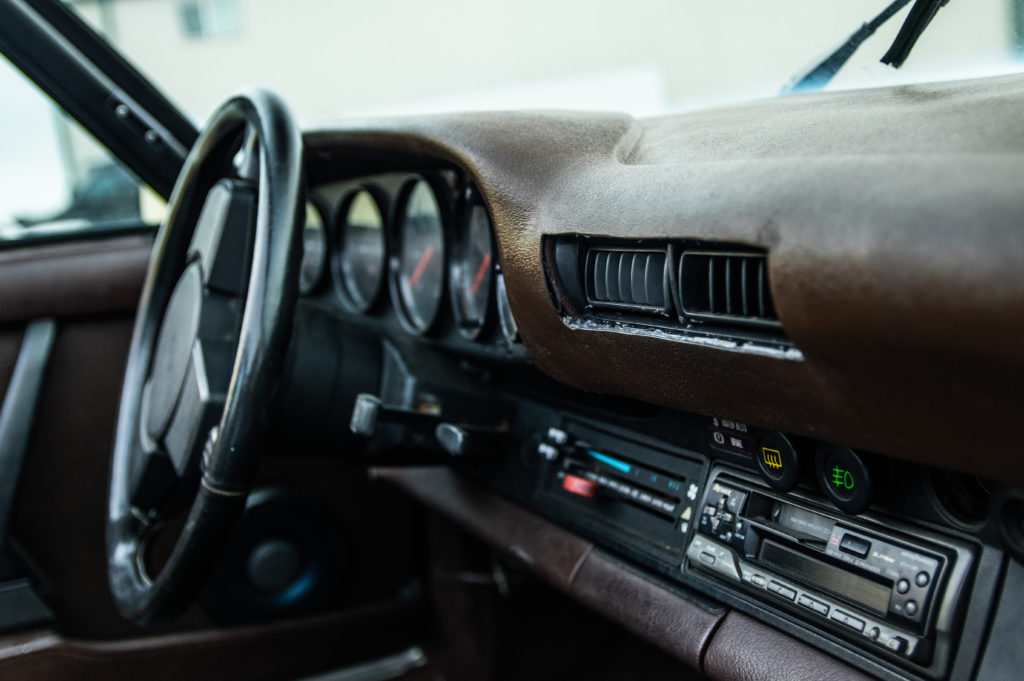
The dashboard is protected by a poorly fitted plastic cover. [Photo: Peter Thompson]
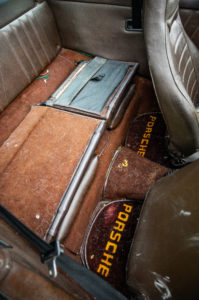
Cleaning the carpets did alleviate the mold smell somewhat, while fold-down rear seat backs offer usable cargo (and dog) space. [Photo: Peter Thompson]
To get it running required new fuel injectors, ignition components, a battery, a fuel pump, a fuel-system flush, a brake-fluid flush, and air-injection components, along with fresh tires and an oil change. After the initial round of mechanical housekeeping, it actually runs quite well; I suspect that the engine has been rebuilt at least once.
The body has also been repainted at some point, and underneath a thick film of pollen, dirt, and despair, it’s a decent re-spray. Whoever painted it even took the care to paint-match the zip-ties securing the rusty chicken wire underneath the Turbo’s “tea tray” tail, often confused for the whale tale.
The interior was worse; in lieu of that lovely old-school 911 smell—part leather, part engine—was mold, horrible mold. The smell was so strong that I wore a respirator during the first few drives. Removing and washing the carpets, along with a healthy dose of Colorado sunshine, did improve it, but I still have the paranoid sensation of mold spores tickling my tonsils with every breath inside of the car. The dashboard is covered with a poorly fitted plastic
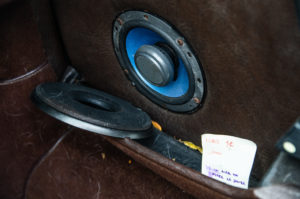
A faded post-it note offers little information to solve the mystery of this Targa’s past.
cover, but I trust that it’s best not to unveil what lies beneath. I have yet to address any of the extensive cosmetic issues other than cleaning up such found interior treasures as loose speaker grilles, a note that a potential buyer left on it, and an inoperative ’90s-era pager. The odometer is frozen at 216,000 behind an inoperative UV-faded speedometer needle, and that may have happened decades ago.
But there is a minimum value floor for every desirable car, and I suspect that the minimum for a running and driving 911 SC Targa in this condition is in the mid-$20,000s range—close enough to the E30’s value for a comparison.

I would prefer fifteen-inch Euro-weaves, but the Azev wheels are unique. [Photo: Peter Thompson]
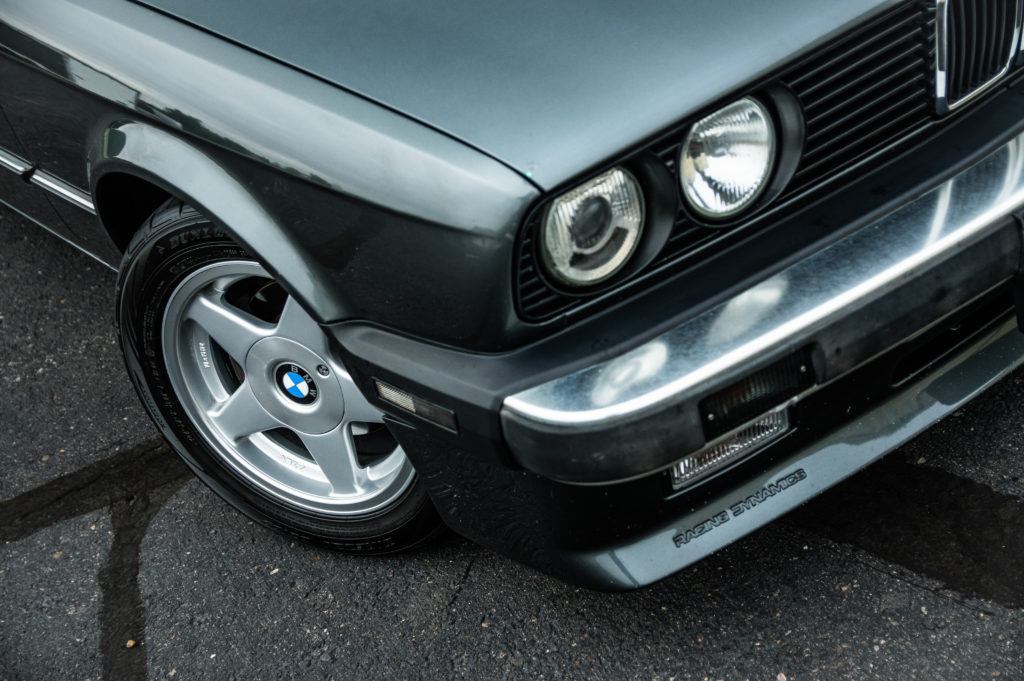
Euro “smiley” headlights complete the front end. [Photo: Peter Thompson]
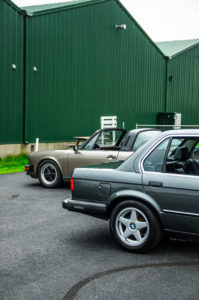
The lack of a rear valance on early model E30s lets the rear end down.
On an overcast summer morning, the E30 has that classic tidy, understated three-box design language that defines BMWs of the 1980s. Being a 1987 model year, it retains the early-model big “diving board” aluminum U.S.-market impact bumpers that are often overlooked for late-model plastic-bumper E30s. Personally, I love the look of diving boards on an E30, and this one looks downright menacing with raw aluminum over the Racing Dynamics front valance (a suspiciously similar design to the factory iS valance). Euro “smiley” projector headlights are a nice front-end touch, but moving rearward, things get less interesting. I would prefer fifteen-inch Euro-weaves over the Azev wheels, and the lack of a rear spoiler and rear valance that all metal-bumper E30s are missing leaves the rear end unbalanced, similar to a bulldog.
The Delphin Grey paint gives it a battleship-like quality, especially with how hard-edged the E30’s lines are compared to the Targa’s. Taking in the scene in the quiet of the morning, I can’t help but think that there are few cars that pull at my heartstrings like a clean E30. But one of those is a classic 911!
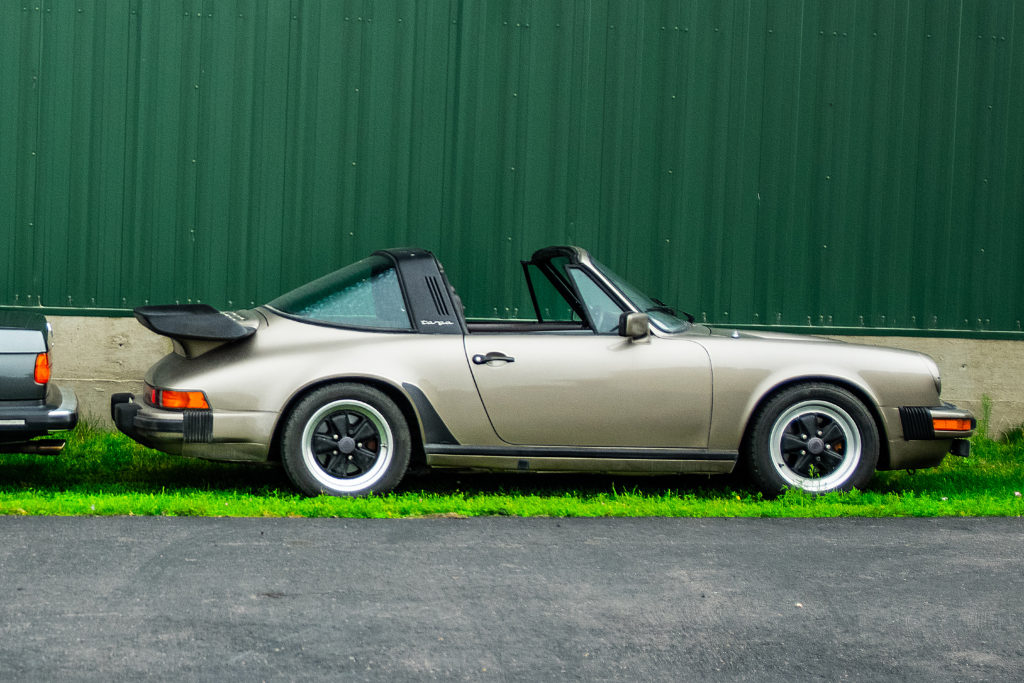
Love it or hate it, the Targa has its own unique form. [Photo: Peter Thompson]
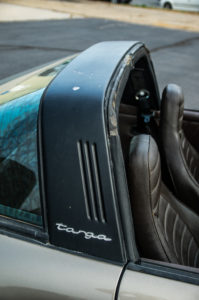
The targa–half convertible, half coupe, all fun!
Compared to its coupe sibling, the Targa has a love/hate following. Until I spent several weeks daily-driving (and looking) at the Targa, I was in the dislike camp. The raised Targa roll bar and upright rear window abruptly disrupt the coupe’s elegantly sloping roofline—a soiled Targa top on this example doesn’t help its aesthetics, either.
But with that top off, the Targa has its own distinct character, one that won me over quickly after several days of topless motoring—a safety precaution due to the mold spores. The brilliance of the Targa is that you get the benefits of a convertible with improved rigidity, thanks to the roll bar, and less backdraft thanks to a rear window.
The Turbo tail is another polarizing element that I think adds balance to the rear end of the Targa. Bronze metallic (or whatever color it is; the door-jamb color-code placard is long gone) over black Fuchs wheels suits the form of the 911 SC and the lines of the Targa wonderfully. To my eye, the Targa has grown to be just as attractive as the coupe, and I appreciate its unique style. This example, despite being covered in filth and infested with mold, is a truly beautiful car.
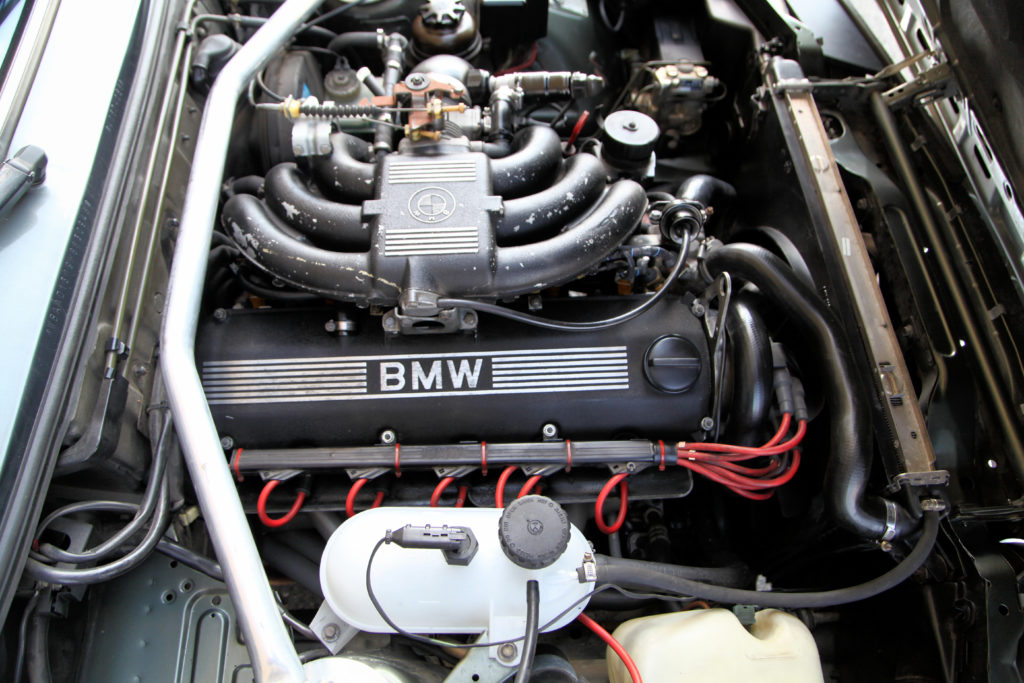
The M20B25 engine in this E30 is good for 161 horsepower at Colorado altitudes. [Photo: Peter Thompson]
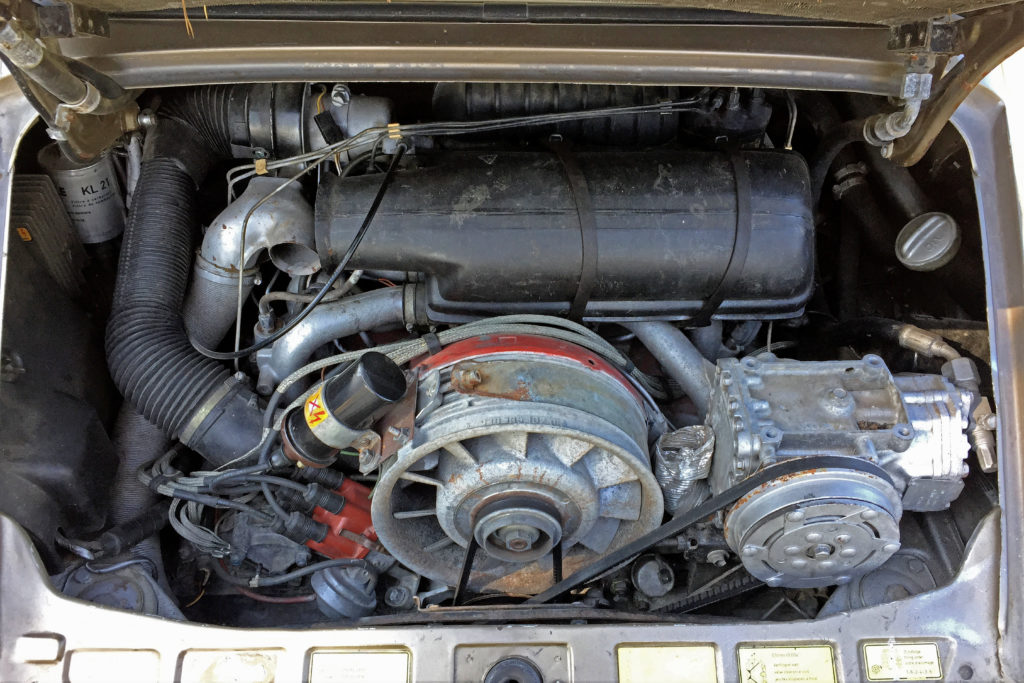
The Targa’s three-liter flat-six engine was good for 180 horsepower when new. [Photo: Peter Thompson]
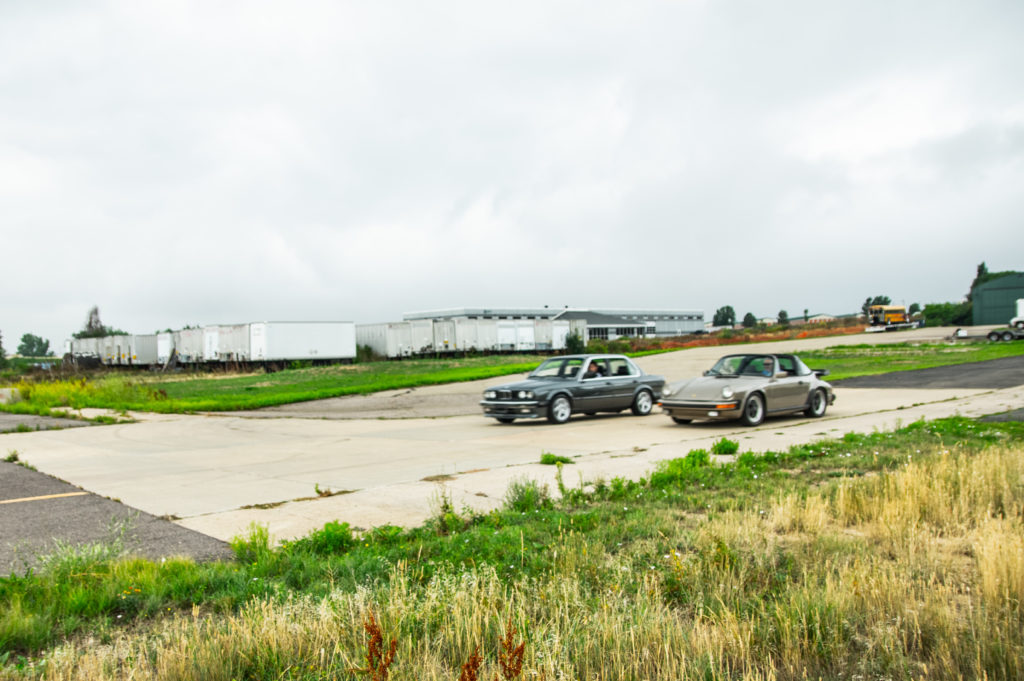
The E30 beat the Targa to the line, but just barely. [Photo: Peter Thompson}
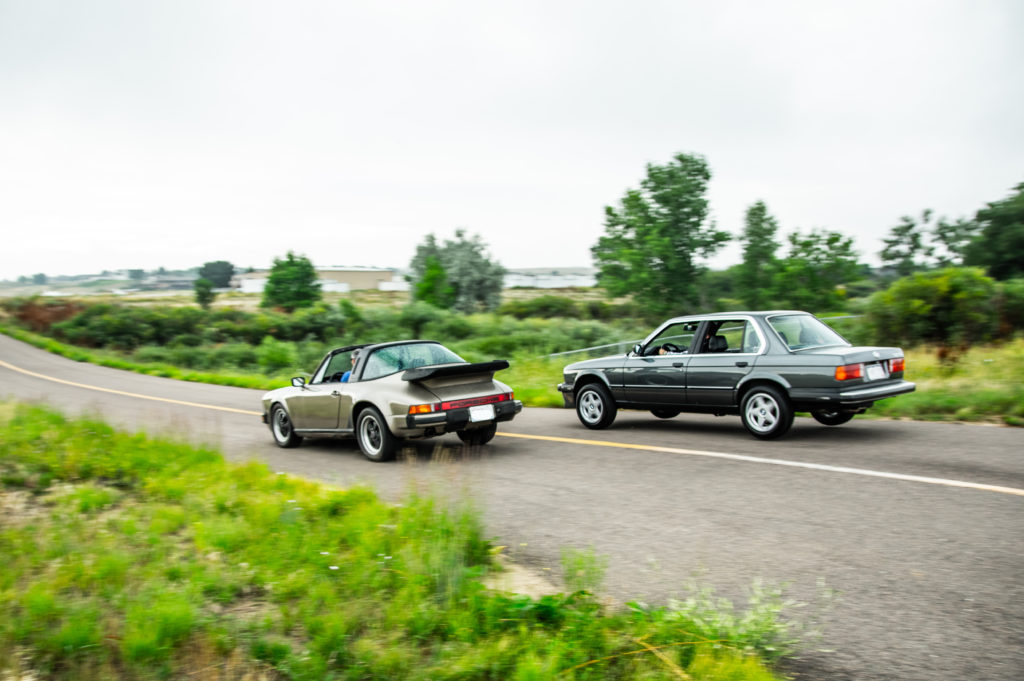
[Photo: Peter Thompson]
And that brings us to another Targa disadvantage—and probably the reason that it lost: the 915 gearbox. To use an aviation fly-by-wire analogy, when you try to shift a 915 gearbox, your input is just one vote in the election. It may receive your shift without complaint, or it may balk, protest, or reject your wishes with all of the consistency of distracted two-year-old. But the problem often lies more with the pilot than the gearbox, and this Targa’s 915 gearbox is actually quite good, despite its high mileage; there is an art to driving a 915 gearbox smoothly, and when you do, it is highly rewarding. The trick is to mind your clutch and rev work while offering your gear selection to the gearbox: Here you are, sir, and thank you in advance!
Chalk it up to Stockholm Syndrome, but the 915 gearbox is one of my favorite parts of driving the Targa. From the perspective of the E30, this is complete insanity; the E30’s Getrag 260 gearbox is crisp and consistent, and it does its job without complaint—as it should. Another win for the E30.
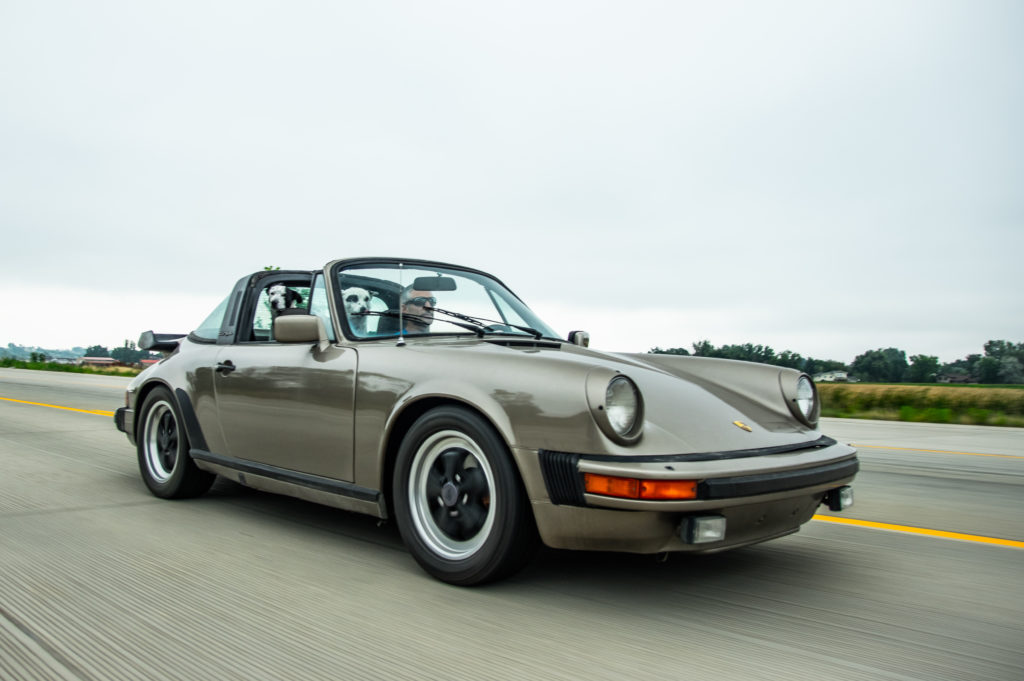
Both cars offer excellent visibility and equal parts nostalgia. [Photo: Peter Thompson]
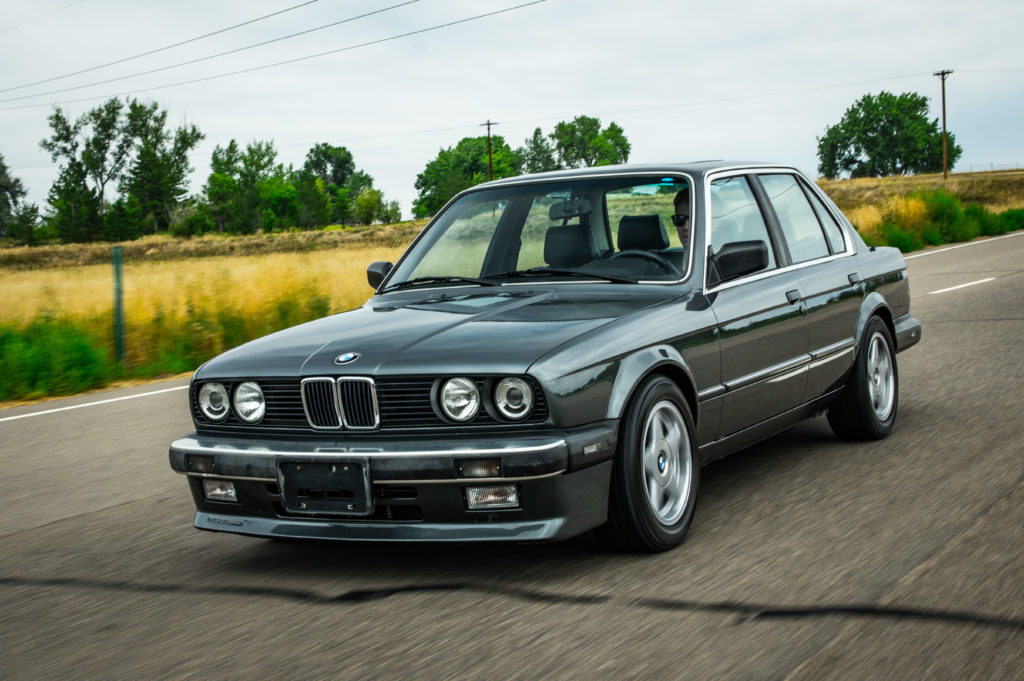
[Photo: Peter Thompson]
The tail-happy tendencies of the Targa’s torsion-bar suspension are a non-issue if you display even the most basic performance-driving technique. In fact, the E30’s rear end is more likely to step out, due to its added power—but because it’s an E30, it steps out with the clearest of intentions.
The E30 also wins in the ergonomics department with easy-to-reach and easy-to-understand controls—don’t even try to understand the climate controls of the Targa. The E30 gets another plus for air-conditioning that actually blows cold. You can mitigate the Targa’s poor air conditioning by removing its namesake top, but on a hot day, that just lets more sunshine in—or more mold spores out, in my case.
The Targa has better brakes, a better suspension—the E30 left the ground slightly during our race, while the Targa remained planted—and feels much lighter and more tossable despite weighing only 40 pounds less than the E30.
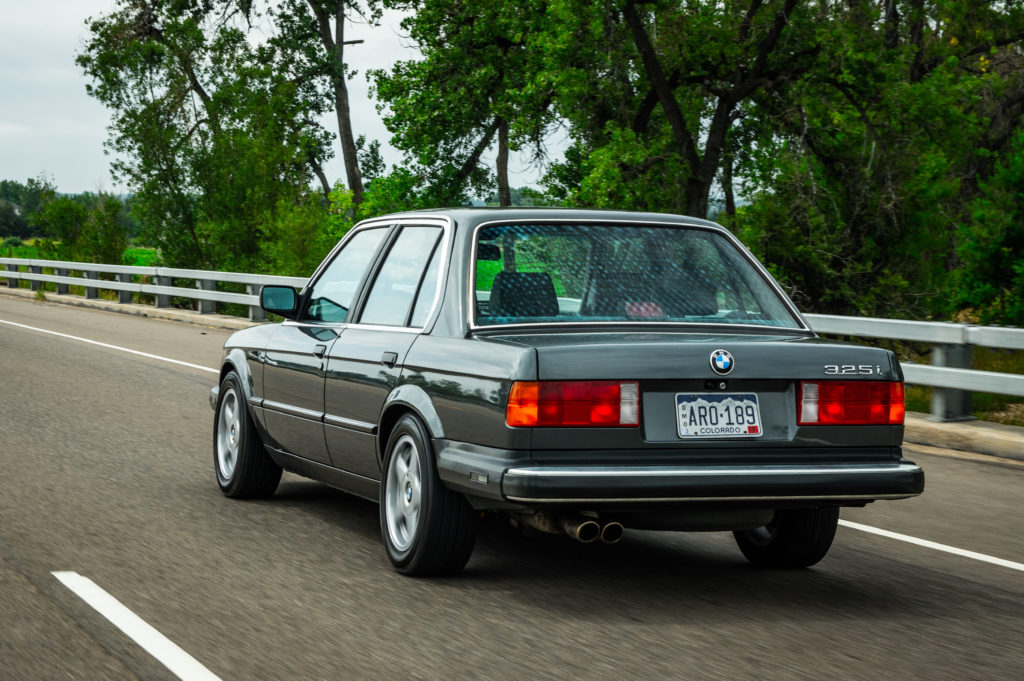
The E30 is the better overall car, but the guilt-free condition of the Targa does allow the dogs to come along. [Photo: Peter Thompson]
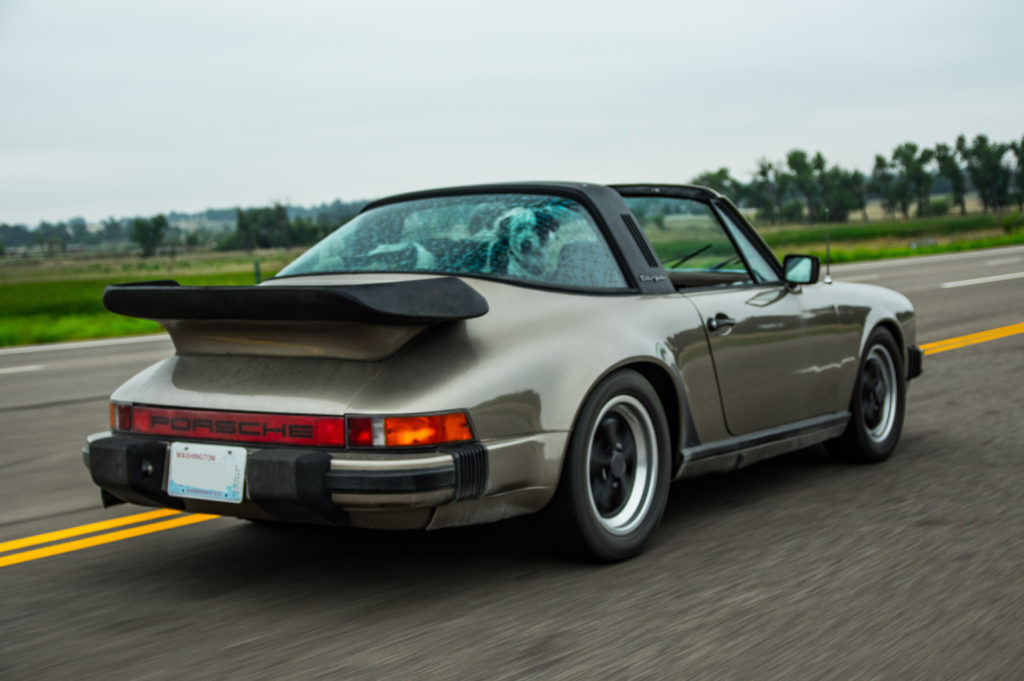
[Photo: Peter Thompson]
The E30 is exponentially better bang for the buck; it has a usable back seat and ample storage space, and will soak up a summer’s evening rush-hour commute with poise. The same commute in the Targa left my dignity in tatters, thanks to being sweat-stained, sunburnt, and with a potential mold-induced respiratory infection. Even with the recent hike in prices, few cars offer the combination of nostalgia, practicality, and reliability for the price of a sorted E30—especially this example.
The odds of finding a 911 SC Targa as cheap as this example are rare, and the long-term cost of maintaining it will surpass the acquisition price of even the nicest E30. Yet somehow the car I’ve chosen to drive more often over the last few weeks has been the Targa. Maybe it’s because I have so much more seat time in E30s, and the novelty of the Targa hasn’t worn off yet. It feels more special, more engaging to drive, and provides a more rewarding experience.
I suppose, in the twisted logic of my enthusiast brain, that this makes it better because it’s worse.
The Targa’s guilt-free interior also allows my two medium-size dogs to come along—not an option on the fine leather in the E30—an important factor for my wife’s bring-the-dogs-everywhere lifestyle. With the rear seat backs folded down, the dogs fit perfectly under the Targa’s roll bar, although turning my head to clear the passenger-side blind spot often results in a surprise dog lick to the face. With only one of the rear seat backs folded, my wife even fits in the back—with the dogs! We tested this at a recent Sunday brunch with my father-in-law; my wife reports, “It was tolerable.”
Pro tip: Tell the valet he may get a friendly dog lick to the face, and your car will remain right in front of the valet stand where you parked it!
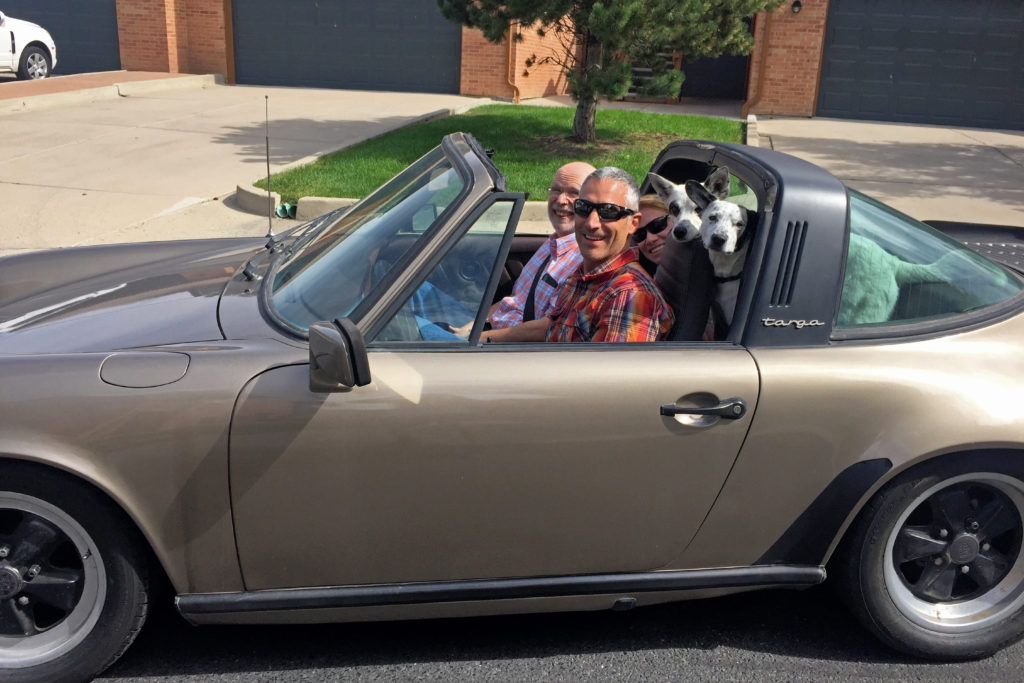
Three adults and two dogs fit with room to spare in the Targa. [Photo: Alex McCulloch]

